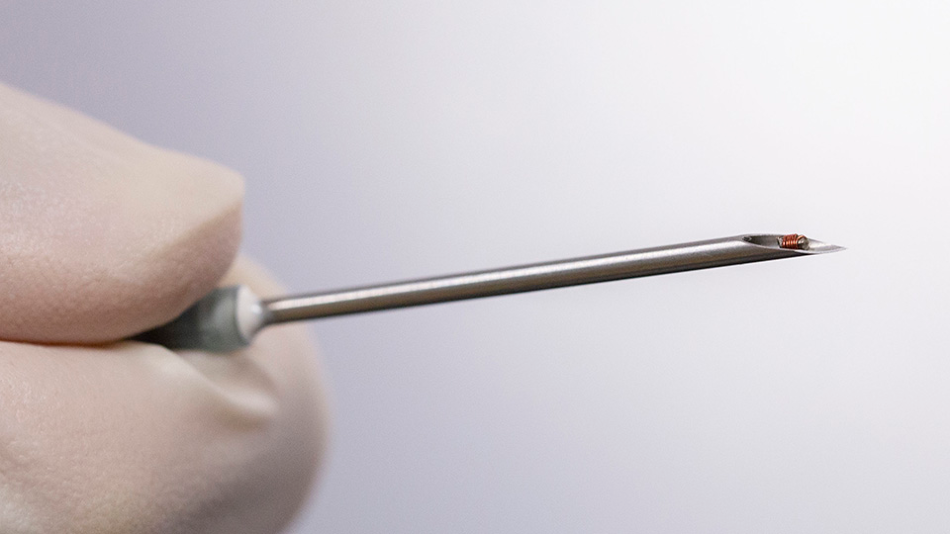Dec 23 2019
Very small subcutaneous implants with the ability to perform continuous measurement of heart rate, blood glucose, and other physiological conditions of a person are the ultimate goal of modern medicine. Recently, a research team at NUS has made a huge leap into making this dream closer to reality.
 The highly sensitive wireless technology developed by NUS researchers can monitor health indicators such as blood pressure using microsensors that are tiny enough to be injected under the skin. Image Credit: National University of Singapore.
The highly sensitive wireless technology developed by NUS researchers can monitor health indicators such as blood pressure using microsensors that are tiny enough to be injected under the skin. Image Credit: National University of Singapore.
The researchers created an innovative wireless reader that is highly sensitive to even slightest changes in the readings of a sensor, enabling the development of sub-millimeter microsensors, which are small enough to be injected under the skin.
At present, attempts to considerably reduce the size of these microsensors have been hindered mainly by technology limitations. Since these sensors are too tiny to be powered through a battery, they need a sensor reader placed close to them to continuously detect signals like chemical or pressure changes using magnetic fields.
If a reader must be in a position to understand the signals, it is necessary for the sensor to be sufficiently large to develop a strong signal in the reader. To date, scientists have not been able to develop practical microsensors measuring less than 1 mm.
Headed by Assistant Professor John Ho, the researchers from NUS Electrical and Computer Engineering and the NUS Institute for Health Innovation and Technology devised a new method for measuring the signal, which involves calibration of the wireless reader to operate at an exceptional point.
This is a unique state at which the reader turns highly sensitive to objects in the vicinity. The outcome is that the new reader becomes so sensitive—three times more sensitive than current readers—that it can detect even the minute signals emitted by the sub-millimeter microsensors.
A working prototype of the reader created by the researchers has the ability to read a microsensor that is 0.9 mm in diameter upon being implanted beneath the skin with the help of a syringe. During laboratory experiments, the reader could monitor the heart rate and rate of breathing by reading even slight movements of the battery-free microsensor.
The researchers took two years of studies, between February 2017 and January 2019, to create this novel microsensor. The achievement by the researchers has been reported in the Nature Electronics scientific journal in August 2019.
We hope that our breakthrough will be a trailblazer for the future of minimally invasive health monitoring solutions where patients are immediately alerted whenever their physiological conditions such as heart rate and blood glucose cross a critical threshold.
John Ho, Assistant Professor, Electrical and Computer Engineering, National University of Singapore
Ho added, “Now that we have proven the viability of our reader, the next step is to develop a suite of passive (battery-free) microsensors that can monitor various physiological parameters such as glucose, bioelectrical activity and blood chemistry.”